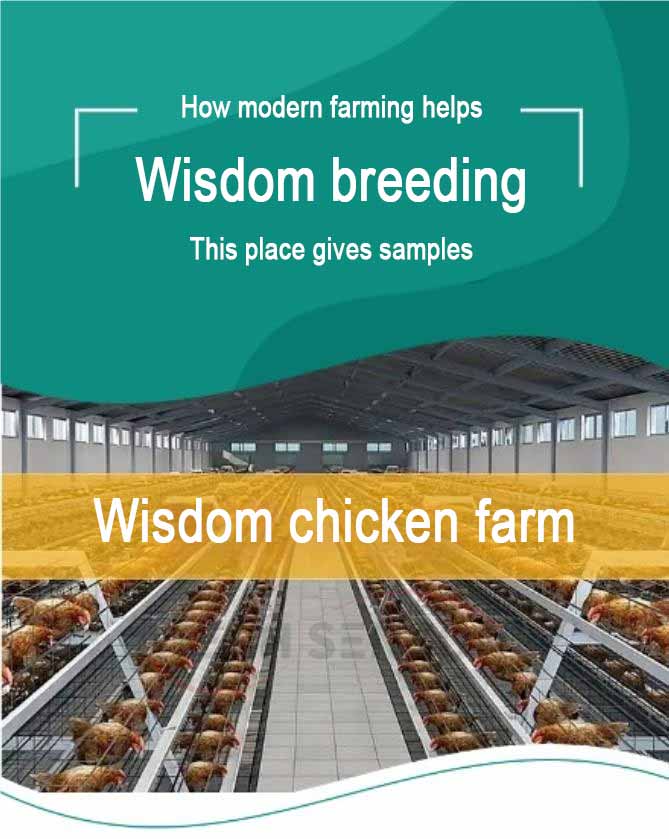
my country is now also a large breeding country, but the rising breeding costs, increasing management difficulties, disease prevention, high labor costs and other issues are all reasons that restrict breeding companies from increasing profits. Therefore, it is necessary to change the breeding thinking and start from the perspective of management and monitoring to improve the level of breeding management and control. Obviously, the smart breeding monitoring system can play a certain role.
Smart farming mainly monitors environmental parameters by placing sensors in the breeding house, mainly including temperature and humidity, light intensity, and special gas monitoring. The information collection used by our company's research and development generally includes air temperature and humidity sensors, carbon dioxide sensors, ammonia sensors, and hydrogen sulfide sensors, which collect environmental values in the house in real time and upload them to the collection terminal. Automatic monitoring, collection and transmission of environmental parameter signals (including CO2, ammonia nitrogen, H2S, temperature, humidity, light intensity, video, etc.) in the breeding house are realized.
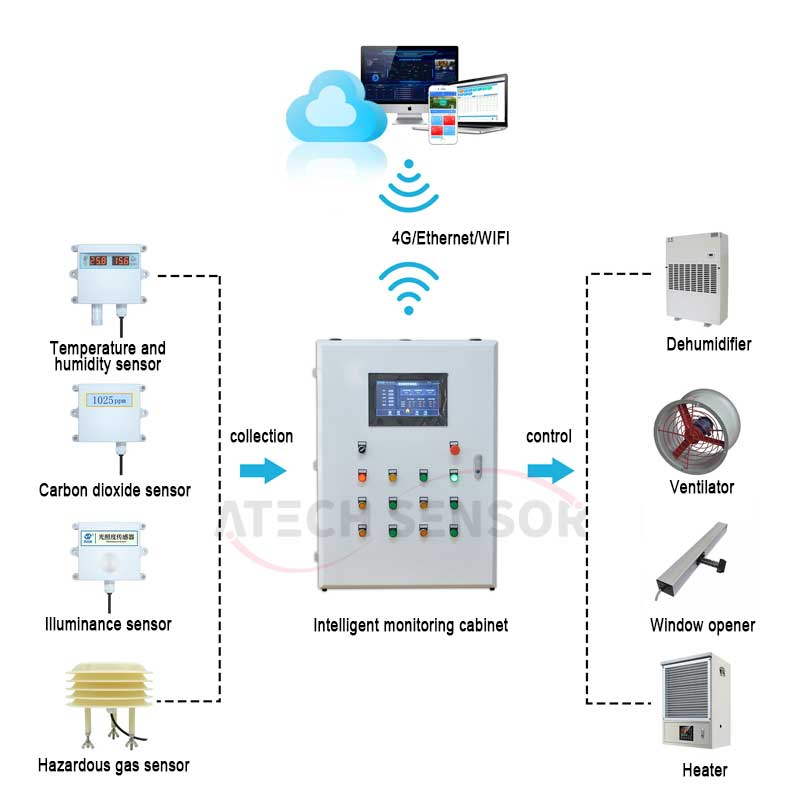
(1) Temperature and humidity monitoring - creating a comfortable temperature and humidity environment
Through the temperature and humidity sensors, the temperature and humidity values inside and outside the breeding house are monitored and collected in real time. By comparing the temperature inside and outside the house, measures to control the temperature and humidity are taken in time. For example, the temperature in the chicken house should be maintained at 18°C-23°C, and the minimum should not be lower than 15°C. The temperature of the ordinary rabbit house should be maintained between 16°-29°C, and the relative humidity is 40%-70%. In the hot summer, when the indoor temperature is higher than the outdoor temperature, start the fan for air exchange, ventilation and dehumidification; in the cold winter, insulation treatment is required, and appropriate heating measures (such as solar energy, electric furnace, boiler heating) are taken.
The temperature and humidity sensors used by our company in the Internet of Things system have the following functional characteristics: humidity and temperature sensors have digital output and can be fully converted to each other, without the need for complex verification and calibration processes; full-scale calibration, 485 signal output digital display; wall-mounted installation; long-term stability; no other external components required; ultra-low power consumption. Full-scale temperature and humidity compensation, wide temperature and humidity measurement range, and optional measurement range.
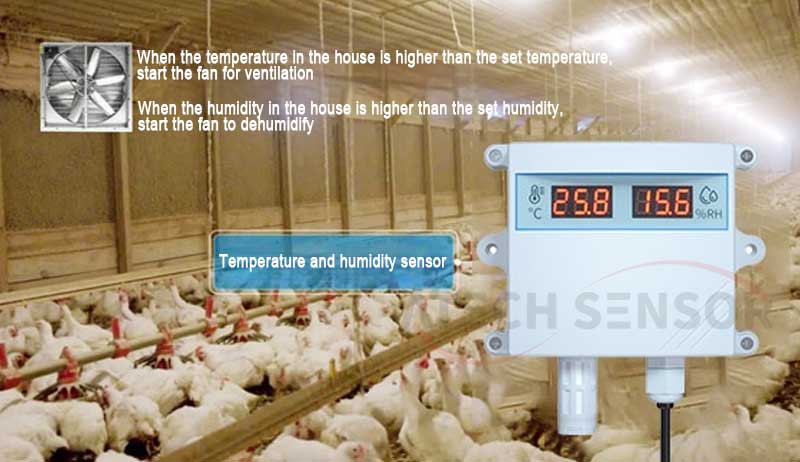
Main technical parameters of temperature and humidity sensor: Sensing element: original imported temperature and humidity sensor; humidity range: 0~100%RH; temperature range: -30~+70℃ (other ranges can be customized); response time: <1s; power supply voltage: 5V~24V; overall power consumption: ≤0.3W.
(2) Light intensity monitoring - ensuring sufficient light exposure time
Lighting affects the growth, appetite, sexual maturity, and molting of livestock and poultry, especially the egg production rate and pecking habit of chickens. Therefore, sufficient light exposure is an important factor in ensuring the health and rapid growth of animals. For the situation where the light in the breeding house is dim on cloudy days or the daylight hours are insufficient in winter, it is appropriate to increase auxiliary lighting to make up for the lack of light intensity.
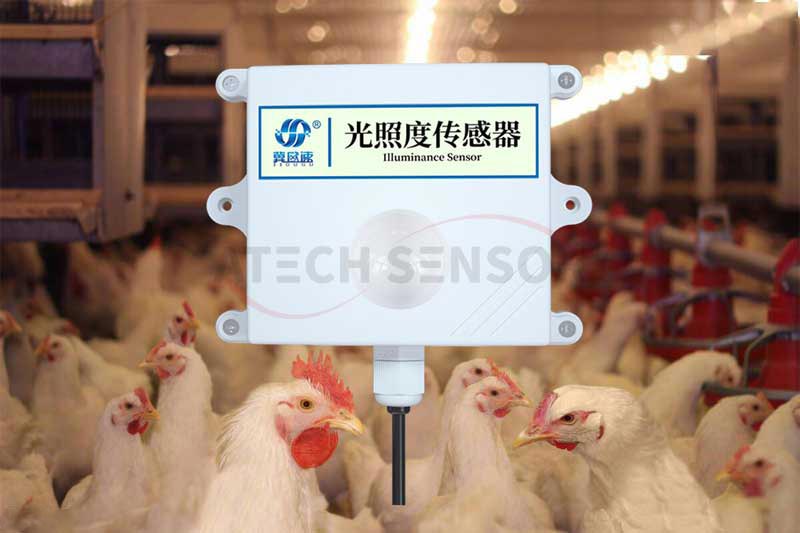
The light intensity sensor adopts a high-sensitivity photosensitive detector, matched with a high-precision linear amplifier circuit. After rigorous testing, it has the characteristics of wide measurement range, easy use, easy installation, and long transmission distance.
Measuring range: 0~2/20/200KLux.
Its power supply voltage is 24VDC, and its accuracy is ±5%.
Output signal: voltage signal (0~2V, 0~5V, 0~10V, choose one), 4~20mA, RS485, SDI-12.
(3) Monitoring of gases such as CO2, NH3, and H2S - ventilation to keep the air in the breeding house fresh
Carbon dioxide is a colorless, odorless, slightly sour gas. Carbon dioxide is non-toxic, but if the carbon dioxide content in the breeding house is too high, the oxygen content will be relatively insufficient.
Ammonia and hydrogen sulfide mainly come from the decomposition of organic matter (feces, urine, bedding and feed). Ammonia is a recognized stressor, and hydrogen sulfide is a toxic gas with a relatively high concentration in livestock and poultry houses, with a rotten egg smell. These harmful gases not only affect the health of humans and livestock, but also easily pollute the surrounding environment. Ammonia and other harmful gases can irritate the respiratory mucosa of farmed animals, easily induce chronic respiratory diseases, and then develop ascites syndrome, which is extremely harmful to farmed animals.
Therefore, it is necessary to analyze and detect gases such as CO2, NH3, H2S, etc. in the farm to control the concentration of various gases.
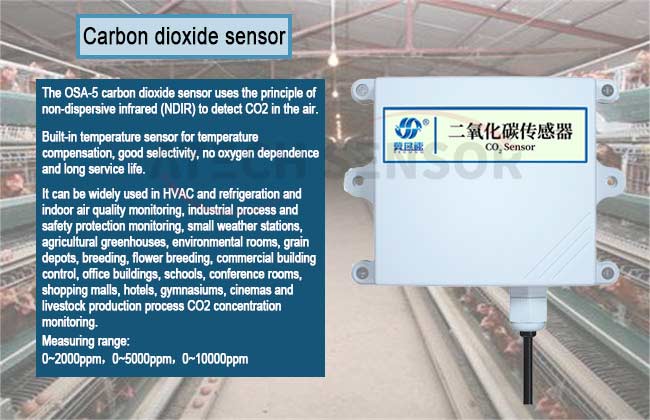
The carbon dioxide sensor uses the principle of non-dispersive infrared (NDIR) to detect CO2 in the air. It closely combines mature infrared absorption gas detection technology with precise optical path design and excellent circuit design. It also has a built-in temperature sensor for temperature compensation. It has good selectivity, no oxygen dependence, and a long service life. Measuring range: 0~2000ppm, 0~5000ppm, 0~10000ppm
The smart farming IoT system uses carbon dioxide sensors, ammonia analyzers, hydrogen sulfide sensors and other equipment to collect gas parameter values in the breeding house in real time. The values are transmitted to the management platform, and the control equipment is linked to control ventilation, which can discharge dirty air in time and continuously absorb fresh air.
At the same time, considering the impact on temperature and humidity in the house, ventilation should be carried out when the temperature is higher in winter, and in the cool evenings or mornings in summer.
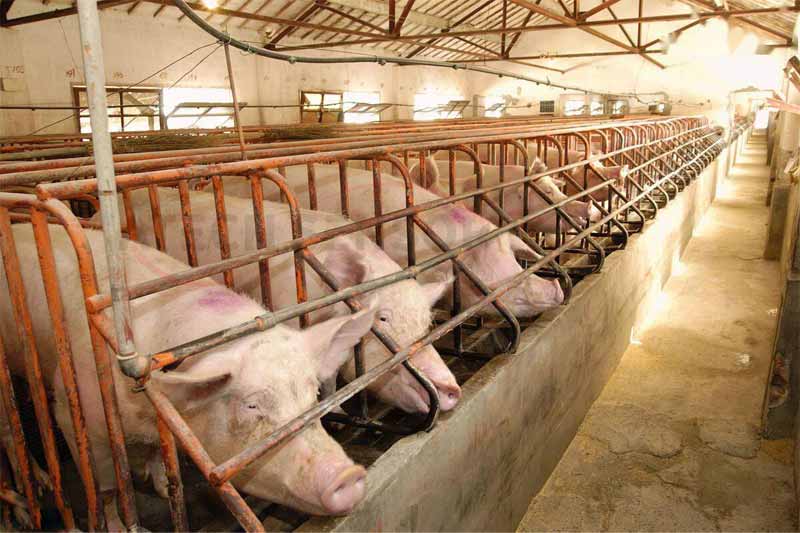
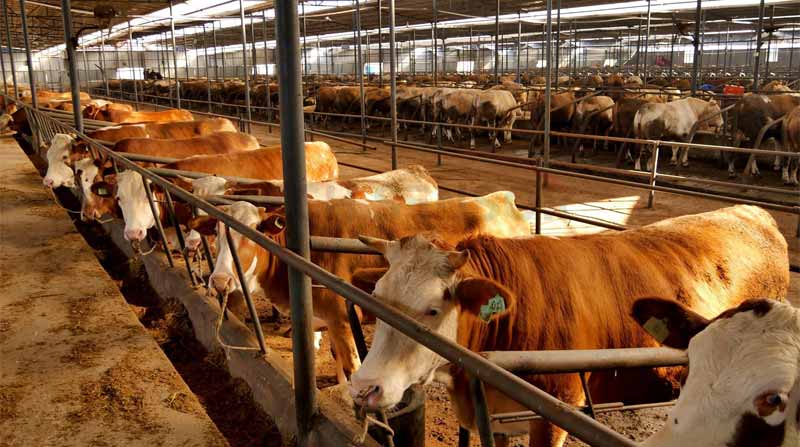
There are many categories of sensing equipment related to smart breeding monitoring systems. Depending on the types of poultry and livestock being raised, pig farms and cattle farms are also applicable. Sensors can be selected based on the growth characteristics of poultry and livestock to build a complete intelligent breeding management system and catch the express train of the development of the Internet of Things.

